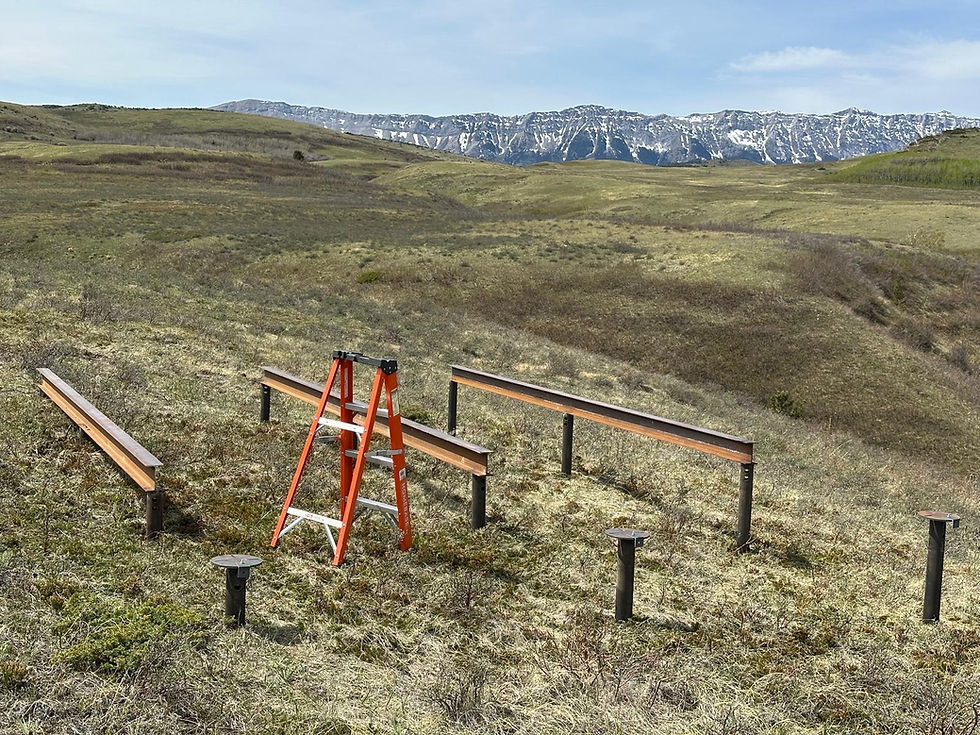Technical Guide: Screw Pile Foundation Details
- DownForce Piling
- May 9
- 2 min read
Screw pile foundations are a modern, efficient alternative to traditional concrete footings, offering superior load capacity, faster installation, and long-term stability. This guide covers key technical details—from design considerations to installation best practices—for engineers, builders, and homeowners in Calgary.
1. Screw Pile Foundation/Design & Engineering Specifications
Key Components
Helical Plates: Typically 8" to 16" diameter (varies by load)
Shaft: Square or round steel (2⅞" to 4½" OD)
Galvanization: Hot-dip zinc coating (minimum 3.9 mils) for corrosion resistance
Load Capacity Standards
Residential: 10–50 kips/pile (varies with soil)
Commercial: Up to 200+ kips/pile (engineered solutions)
Testing: Each pile load-tested to 150% of design capacity
Soil Adaptability
Soil Type | Helix Configuration | Torque Requirements |
Clay | Single/multi-helix | 4,000–7,000 ft-lbs |
Sand | Multi-helix | 5,000–8,500 ft-lbs |
Rock | Rock-socket helix | 10,000+ ft-lbs |
2. Installation Process: Step-by-Step
Site Assessment
Soil testing (shear strength, moisture content)
Frost depth verification (6–8 ft in Calgary)
Equipment Setup
Hydraulic drive heads (5,000–30,000 ft-lbs torque)
Laser-guided alignment systems (±1° tolerance)
Installation Metrics
Speed: 15–30 minutes/pile (typical residential)
Depth: Minimum 1 helix diameter below frost line
Torque Monitoring: Real-time verification (1 kip = 10 ft-lbs torque)
3. Advantages Over Concrete Foundations
Feature | Screw Piles | Concrete |
Installation Time | Hours | 28-day cure |
Load Ready | Immediately | 28-day cure |
Frost Heave Risk | None (below frost line) | High |
Soil Disturbance | Minimal | Extensive |
Lifespan | 50–75 years | 30–50 years |
4. Calgary-Specific Considerations
Permitting: Complies with Alberta Building Code (Section 9.15)
Seismic Design: Lateral load resistance up to 0.3g PGA
Winter Installation: No ground thawing required (operates to -30°C)
5. Frequently Asked Technical Questions
Q1: How are screw piles connected to structures?
A: Via bolted or welded pile caps, with options for:
Wood posts (saddle brackets)
Steel beams (moment connections)
Concrete grade beams (rebar cages)
Q2: What’s the maximum lateral load capacity?
A: Up to 20% of vertical capacity (enhanced with grouted shafts or diagonal bracing).
Q3: How do you verify bearing capacity?
A: Through torque-to-capacity correlation (1 kip = 10 ft-lbs) + optional load tests.
Q4: Can piles be installed near utilities?
A: Yes—potholing verifies locations; mini rigs work in 6’ clearances.
Q5: What’s the maintenance requirement?
A: None for galvanized piles. Inspect brackets/bearings every 10 years.















